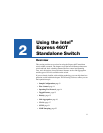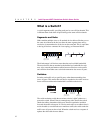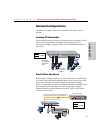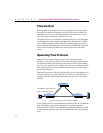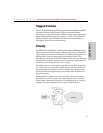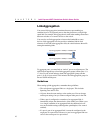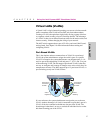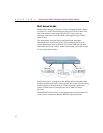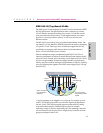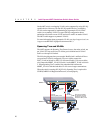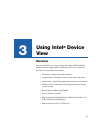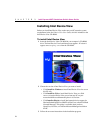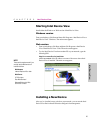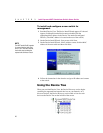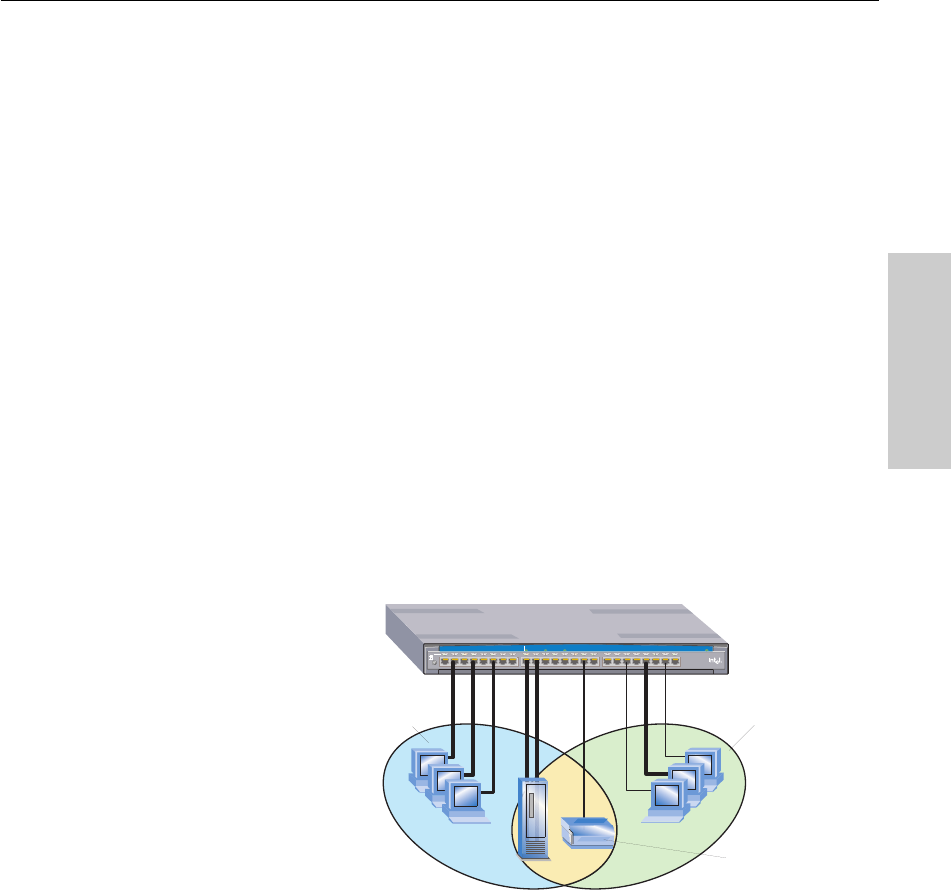
19
Using the Intel Express 460T Standalone Switch
CHAPTER 2
Using the 460T
IEEE 802.1Q (Tag-Based) VLANs
The third type of VLAN supported by the 460T switch is based on the IEEE
802.1Q specification. The specification provides a uniform way to create
VLANs within a network and enables you to create a VLAN that can also
span across the network. Previously, VLAN implementation was vendor-
specific so it was not possible to create a VLAN across devices from
different vendors.
The 802.1Q VLAN works by using a tag added to the Ethernet frames. The
tag contains a VLAN Identifier (VID) that identifies the frame as belonging
to a specific VLAN. These tags allow switches that support the 802.1Q
specification to segregate traffic between devices and communicate a
device’s VLAN association across switches.
There are multiple advantages to implementing 802.1Q VLANs. First, it
improves performance by helping to contain broadcast and multicast traffic
across the switch. Second, ports can belong to more than one VLAN. Third,
VLANs can span multiple switches that support the 802.1Q specification.
Finally, it provides security and improves performance by logically isolating
users and grouping them together. The 460T switch supports up to 256 tag-
based VLANs.
12345678
910111213141516 1718192021222324
MDI
MDI-X
Left
Link = Solid Green
Activity = Blinking Green
Collision = Blinking Orange
Right
10Mbps = Solid Orange
100Mbps = Off
Status
Intel
®
Express 460T Standalone Switch
Status
Module A
Link\Act\Coll
Link\Act\Coll
Port 1 Port 2
VLAN 1:
Engineering
Server and printer
are members of both
VLANs
VLAN 2:
Manufacturing
VLAN 1 computers
can't see VLAN 2
computers
A logical grouping can be mapped to a work group. For example, you can
create a VLAN that groups all the users from the engineering department
into one VLAN. This logical grouping improves performance by cutting
down traffic that belongs to a different logical group (for example,
marketing), improves security (engineering can’t see marketing), and eases
moves because the user doesn’t have to be physically located in the same
group to participate in the VLAN.



